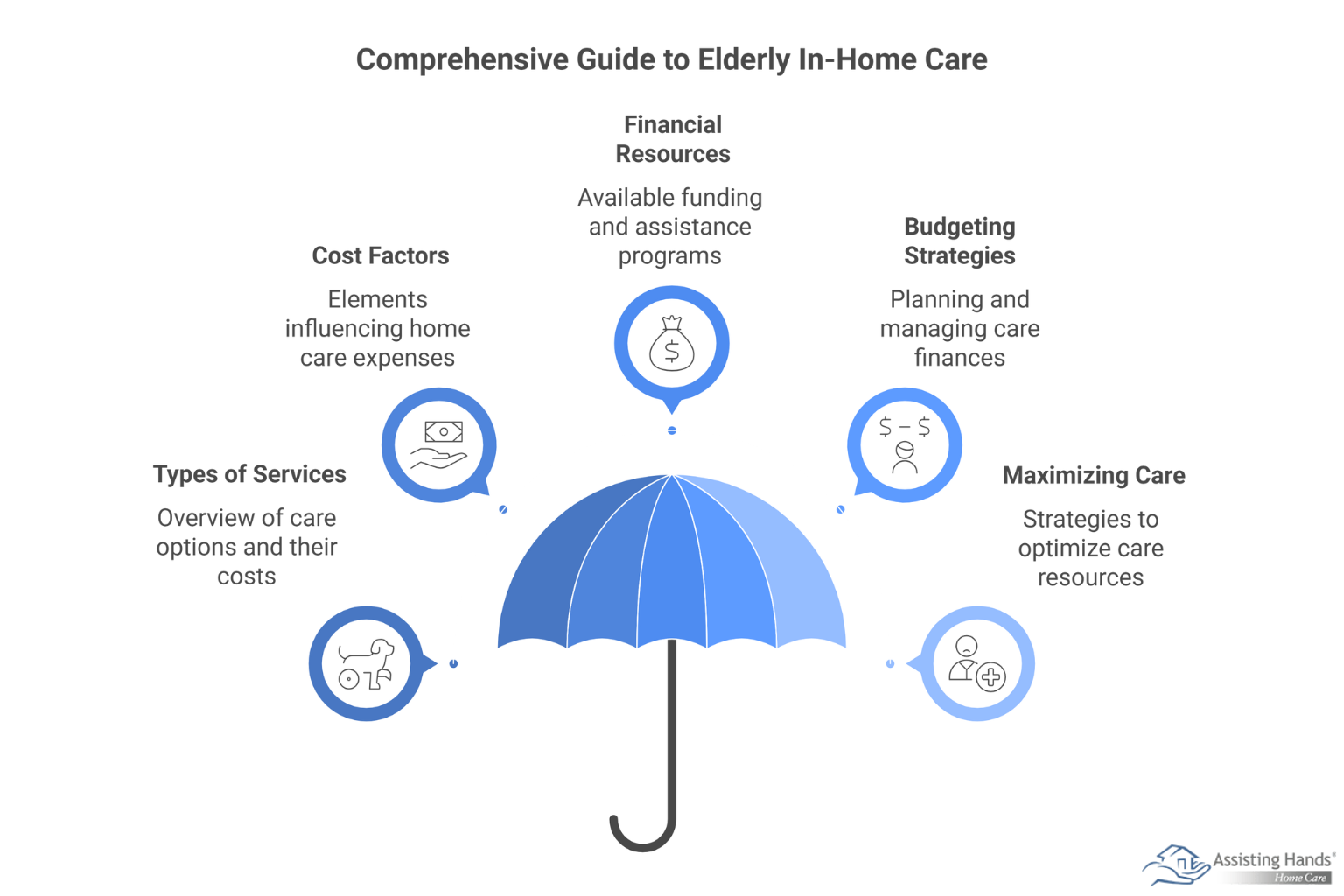
Table of Content
Senior home care provides essential support for aging family members who want to remain in their own homes, but understanding the financial commitment can feel overwhelming. With proper planning and knowledge of available resources, families can create realistic budgets that make high-quality care accessible.
Types of Home Care Services and Their Costs
Home care services vary significantly in scope and pricing. Companion care, which includes light housekeeping, meal preparation, and social interaction, typically costs $15–$25 per hour depending on your location. Personal care services that involve bathing, dressing, and medication reminders range from $20–$30 per hour.
Skilled nursing care represents the highest cost tier, often running $35–$50 per hour for registered nurse visits. These services become necessary when seniors require wound care, medication administration, or monitoring of chronic conditions like diabetes or heart disease.
Many families find that live-in care offers better value for extensive needs. While daily rates range from $200–$400, this option provides 24-hour supervision and assistance at a lower per-hour cost than hourly services.
One of the most challenging tasks of helping an elderly relative age in place safely and comfortably is researching agencies that provide homecare services. Jasper families can turn to Assisting Hands Home Care for reliable, high-quality in-home care for aging adults. We offer 24-hour care for seniors who require extensive assistance, and we also offer respite care for family caregivers who need a break from their caregiving duties.

Factors that Influence Home Care Pricing
Several variables affect the total cost of senior home care services. Geographic location plays a major role. Urban areas with higher costs of living typically charge 20–30 percent more than rural communities for the same services.
The level of care required directly impacts pricing:
- Basic companion services for 4–6 hours daily
- Extensive personal care requiring 8–12 hours of assistance
- Medical care needs that require skilled professionals
- Overnight supervision for safety and emergency response
Agency versus independent caregivers also affects costs. Licensed agencies charge higher rates but provide background checks, insurance coverage, and backup staff when regular caregivers are unavailable. Independent caregivers may cost 25–40 percent less but require families to handle employment responsibilities and assume liability risks.
If you have a senior loved one who needs help maintaining a high quality of life while aging in place, reach out to Assisting Hands Home Care, a leading provider of elder care families can rely on. All of our caregivers are bonded, licensed, and insured, there are no hidden fees, and we never ask our clients to sign long-term contracts.
Financial Resources and Assistance Programs
Multiple funding sources can offset home care expenses. Veterans Administration benefits cover home-based care for eligible veterans and surviving spouses. These programs often pay for several hours of weekly assistance and can significantly reduce out-of-pocket costs.
Medicaid waiver programs in most states provide home care funding for individuals who meet financial and medical eligibility requirements. While these programs often have waiting lists, they can cover substantial portions of care costs for qualifying families.
Long-term care insurance policies purchased years in advance frequently include home care benefits. Review policy details carefully, as coverage varies widely among providers and plan types. Some policies require specific triggers like an inability to perform activities of daily living before benefits begin.
Creating Your Home Care Budget
Start by assessing current and projected care needs with input from healthcare providers. Calculate costs for different scenarios, perhaps starting with 20 hours of weekly assistance and increasing to full-time care over several years.
Research local pricing by contacting multiple agencies and obtaining detailed quotes. Factor in additional expenses like:
- Medical equipment and home modifications
- Transportation for medical appointments
- Increased utility costs from extended home occupancy
- Emergency backup care arrangements
Create a timeline showing when different levels of care might become necessary. This helps families plan financially and make informed decisions about insurance, savings, and assistance programs before crisis situations arise.
Maximizing Your Care Budget
Strategic planning can stretch home care budgets significantly. Combining family caregiving with professional services reduces costs while maintaining high-quality care. For example, family members might handle evening and weekend duties while professionals provide weekday assistance.
Community resources supplement paid services effectively. Many areas offer free or low-cost programs, including senior centers, meal delivery, transportation services, and volunteer companion programs. These resources reduce the hours of paid care needed.
Consider flexible scheduling arrangements that match care intensity to actual needs. Rather than maintaining consistent daily coverage, some families find success with variable schedules that provide more intensive support during difficult periods and reduce coverage during stable phases.
Whether your elderly loved one needs part-time assistance with basic household chores or you need a break from your caregiving duties, the Jasper respite care experts at Assisting Hands Home Care are here to help. All of our home care services are backed with a 100% satisfaction guarantee, there are no hidden fees in our contracts, and we never ask our clients to sign long-term contracts. Call one of our friendly Care Specialists to learn about ways our experienced caregivers can help your loved one.
